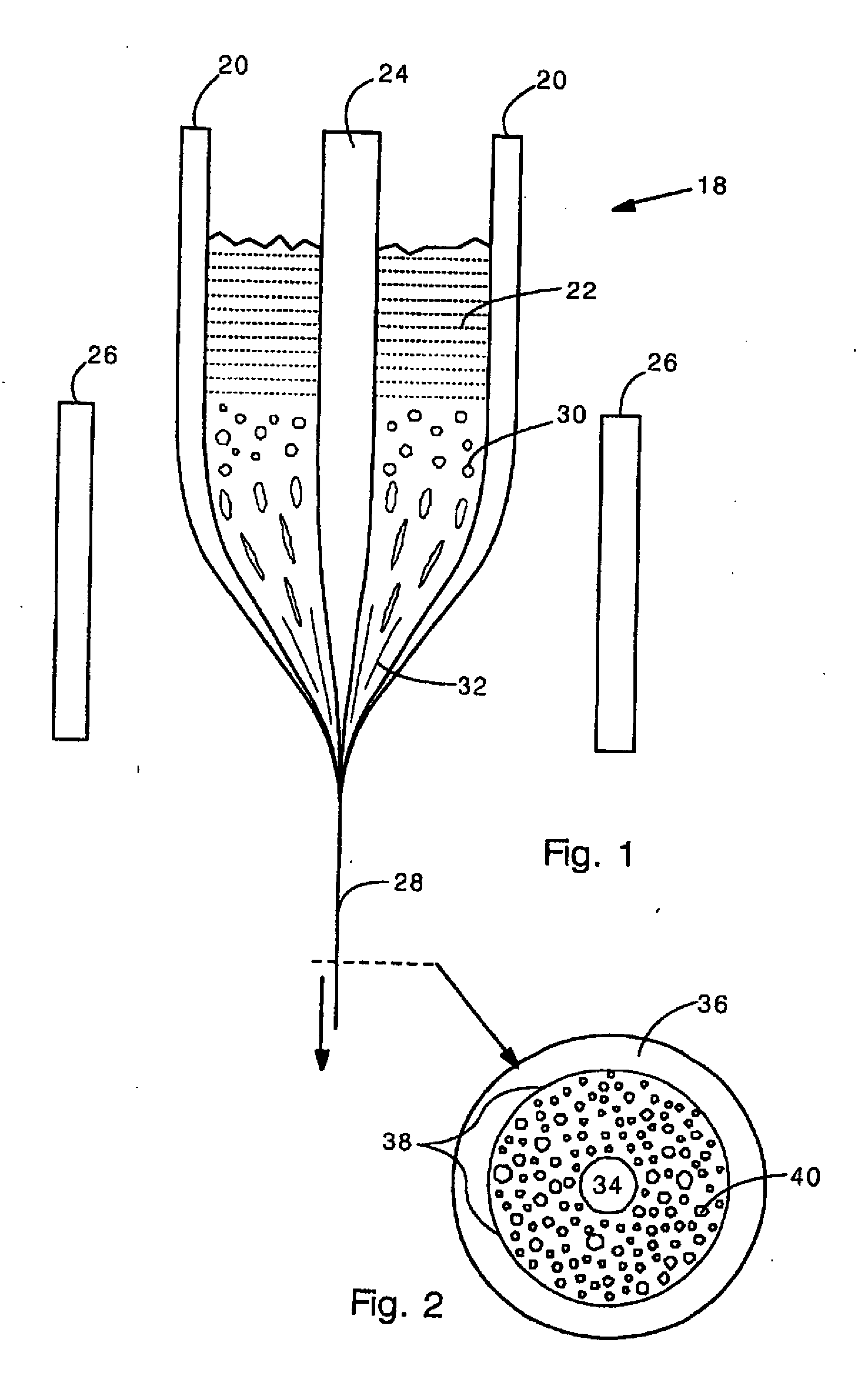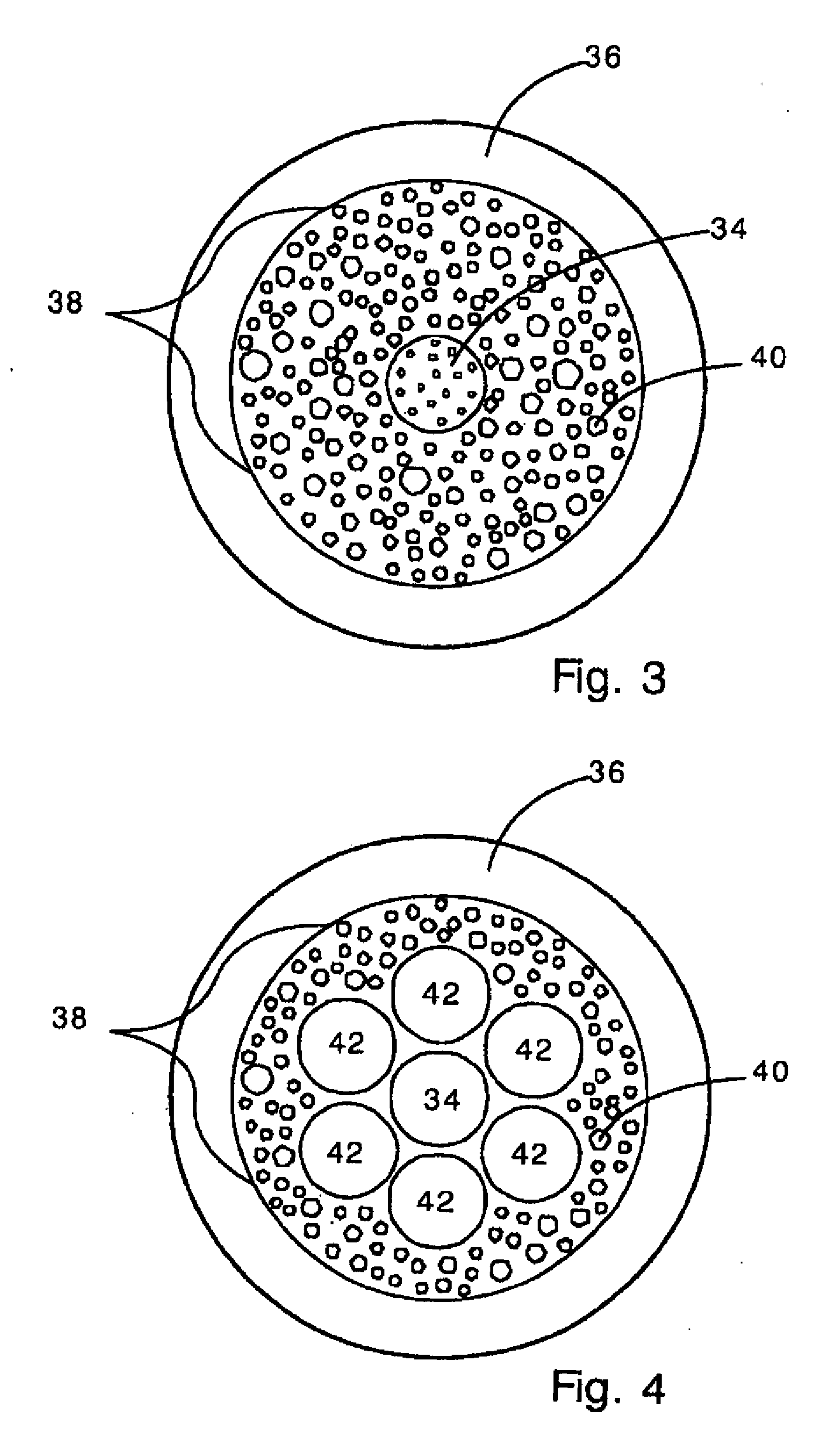Holey optical fiber with random pattern of holes and method for making same
a technology of optical fibers and random patterns, applied in the field of new techniques for making holey optical fibers with random patterns of holes, can solve the problems that the tube-stacking method cannot be used to produce fibers with random arrays of holes, and the complexity of assembling tubes, etc., and achieve the effect of increasing optical loss
- Summary
- Abstract
- Description
- Claims
- Application Information
AI Technical Summary
Benefits of technology
Problems solved by technology
Method used
Image
Examples
Embodiment Construction
[0024] The present invention provides a holey optical fiber with a random array of holes. In the present invention, the holey optical fiber is made by including a gas-generating material in the fiber preform. In a typical embodiment, the gas generating material is located around a solid core (e.g., made of solid SiO2). The gas generating material may be a nitride ceramic (e.g., silicon nitride, rare earth nitrides, AlN, TiN) or carbide ceramic (e.g. silicon carbide, rare earth carbides) that decomposes at or close to the fiber drawing temperature (e.g., 1500-1600 Celsius in the case of pure fused silica fibers). Decomposition produces gas bubbles (e.g., N2, CO2, carbon monoxide or nitrogen oxides) in the molten preform material as it is drawn. The gas bubbles are randomly distributed and are drawn into long thin holes (or tubes) that remain in the optical fiber. The holes reduce the refractive index in the region surrounding the solid core, and so provide light confinement. The numb...
PUM
| Property | Measurement | Unit |
|---|---|---|
| wavelength | aaaaa | aaaaa |
| weights | aaaaa | aaaaa |
| weights | aaaaa | aaaaa |
Abstract
Description
Claims
Application Information
 Login to View More
Login to View More - R&D
- Intellectual Property
- Life Sciences
- Materials
- Tech Scout
- Unparalleled Data Quality
- Higher Quality Content
- 60% Fewer Hallucinations
Browse by: Latest US Patents, China's latest patents, Technical Efficacy Thesaurus, Application Domain, Technology Topic, Popular Technical Reports.
© 2025 PatSnap. All rights reserved.Legal|Privacy policy|Modern Slavery Act Transparency Statement|Sitemap|About US| Contact US: help@patsnap.com



